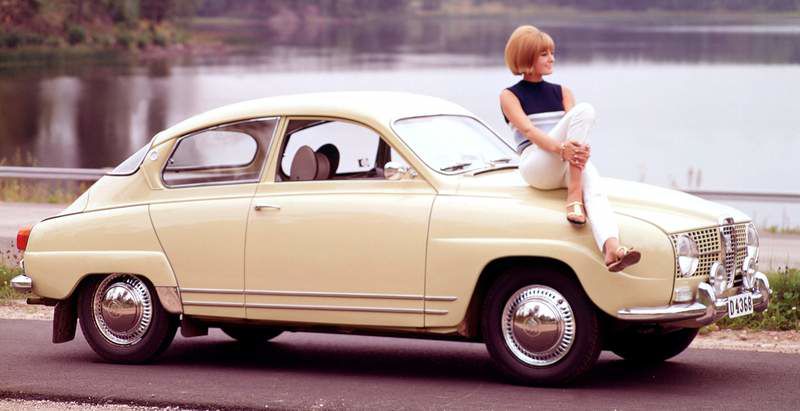A lament for Saab, quirky but loved
Published 4:00 am Saturday, December 19, 2009

- A lament for Saab, quirky but loved
The ignition was in the floor. It had a rear hatchback, not a trunk. The hood was hinged at the front, so it opened away from the windshield. And many of its owners — including Jerry Seinfeld’s character on his long-running sitcom — were intensely loyal.
Auto enthusiasts across the country were dismayed by the news Friday that General Motors was planning to shut down Saab, the Swedish carmaker it bought two decades ago, after a deal to sell it fell apart.
Even with its modest and steadily declining sales, Saab long stood out as a powerful brand in spite of itself.
“It wasn’t designed to be a fashion statement,” said Ron Pinelli, the president of Autodata, which tracks industry statistics. “It was designed to provide transportation under miserable weather conditions.”
But in the process, Saab became a statement of its own. The American competition had floaty rides and Japanese cars were tight on space. By contrast, a Saab had taut steering, requiring drivers to actively guide the car as it powered through ice and snow.
Priced several thousand dollars above Japanese rivals, Saabs featured front-wheel drive and turbo-charged engines, and many were sold with manual transmissions.
Saab sales were always strongest in the Northeast, home for a time to the company’s American headquarters in Connecticut. Many Saab owners consider the brand’s glory days to be the 1980s, when Americans began buying cars again after a recession and energy crisis.
Pinelli, who was selling Volvos at the time, said he admired his Swedish rival. “The cars were communicative,” he said. “They didn’t try to numb the experience like cars do today.”
The cars had odd touches. Swedish engineers assumed drivers would be wearing gloves, so they designed big buttons for the dashboard, Pinelli said. Though the cars were compact, with long hoods and short rear ends, there was plenty of headroom inside.
“They were quirky; they were strange,” said Ray Wert III, editor in chief of Jalopnik.com, a Web site for auto enthusiasts.
American sales for Saab peaked at 48,250 in 1986, when it added the larger Saab 9000 to a lineup focused on its bread-and-butter car, the Saab 900.
Saab, as well as Volvo, gained a yuppie following, leading the Detroit car companies, which were eager to win over younger consumers, to buy them.
The Ford Motor Co. acquired Volvo in 1999. GM bought half of Saab in 1990 and took management control after Saab’s auto business was split from Scania, the Swedish maker of big trucks. GM took full ownership in 2000.
Rather than preserve its Swedish underpinnings, however, GM made Saab part of a strategy to share engineering with the rest of its operations.
It expanded the lineup, building Saabs from the same platforms as Opels, Chevrolets and Buicks, and it even enlisted Subaru of Japan to produce some cars.
The strategy led to a sales revival of sorts from the late 1990s, when Seinfeld drove a black 1996 Saab 900 SE convertible on his show, until the middle of this decade, with sales helped by rebates and inexpensive lease deals.
Industry analysts complained Saab lost its distinctiveness in the crowded market for luxury cars under GM, which stripped it of its angular design.
“More and more frequently, they were using GM platforms and sheet metals, moving away from that uniqueness based on styling,” said Tom Libby, an independent Detroit-area auto analyst. “There were styling cues that were unique to Saab — you see them and you say right away, ‘Oh, that’s a Saab.’”
The blanket approach “seemed to make sense to General Motors,” Wert said. “Unfortunately, it killed what made Saab Saab.”
Saab sales plummeted in 2008 when it became clear that GM was looking to cut Saab loose. Saab sold fewer than 22,000 cars in the United States last year and has managed sales of just 7,812 in all of 2009 — fewer than Buick alone sold last month.
Now, Saab, a brand that once had one of the clearest identities in the industry, seems headed for extinction just as automakers are searching for more distinctive designs to help set them apart.
“It’s a shame that Saab is a victim,” Pinelli said.
GM will close Saab unless buyer appears
Saab, which earned a loyal following over six decades with its stylish but idiosyncratic cars, failed to attract the buyer it needed most — a new owner for the company — leaving General Motors little choice but to announce Friday that it would shut down the brand.
Bigger car companies, which have been struggling with steep losses of their own, showed no interest because Saab was too small even though the brand is well-regarded.
Saab, which filed for bankruptcy protection in Sweden in February, has been a perennial money-loser.
— New York Times News Service






